
For 2020, Sea-Doo looked to redesign its Recreation segment from the ground up, beginning with a blank canvas from which to start from. Certainly there were things that needed to be included – specifically innovations that first hit the scene on the ST3 platform two years earlier.
While increased stability; integrating the versatile LinQ storage system; and Sea-Doo’s industry-leading Ergolock seating design were all high on the list, research showed that increased storage was first in demand. With all of this in mind, an entirely new GTI platform was designed from square one that would meet the needs for all of the different models – and at top of that list was the supercharged GTR 230.
A quick way to pick up performance is to cut weight, and Sea-Doo eliminated 30-to-40 pounds across six models by making the switch to a second-generation Polytec hull. Durable, repairable (thanks to a new service program rolled out by BRP, more information soon-coming) and completely removable like a Spark, the new hull material surprised many at the 2020 reveal in Las Vegas, this past August.

Next came an all-new powerplant: the 1630 ACE. Replacing the 1500 ACE, the new 3-cylinder produces the same 230-horsepower but does so without having to work so hard thanks to its larger displacement and superior cylinder head port/quench/flow efficiency. An updated version of iBR (Sea-Doo’s Intelligent Brake & Reverse system) is super responsive, and offers even better maneuverability in tight spaces. Lastly, a four-and-a-half inch digital display is easy to read and glare resistant.
Available only in Eclipse Black and Neon Yellow for 2020, the new Sea-Doo GTR 230 comes in at 130.6-inches long, making the new GTR surprisingly 2-inches shorter than the previous year’s model (that came in at 132.6-inches long); it’s also nearly an inch taller, and is 49.2-inches wide versus the previous 48.5-inch width. But fear not! The GTR 230’s dry weight of 774-pounds makes it a whole 33 pounds lighter than the previous GTR’s 807-pounds.
And for your all-day riders, you’ll be happy to hear that the new platform increases its “usable space” by 36-percent as well as the GTR swelling its cargo capacity to 42.5-gallons of storage – increasing by 30-percent over the prior 30.8 gallons – a large portion of that gained in the massive glove box, which includes the same padded-and-watertight phone box found in the full-sized ST3 runabouts.
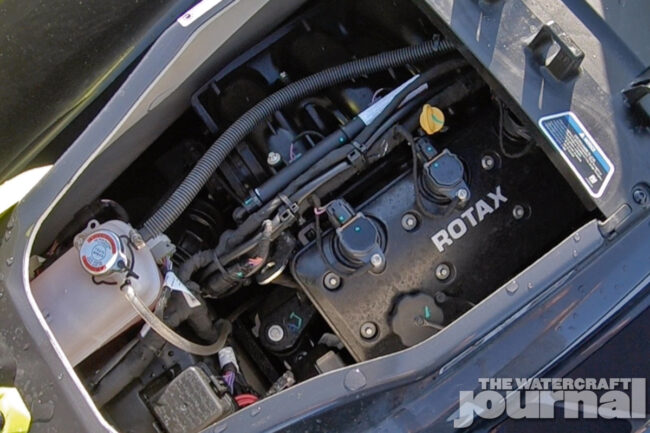
Although not standard equipment, the same 100-watt BRP Premium Sound System has now been repackaged to fit all GTI and GTR models – just as they do for the full-sized machines. The thumb pads too are direct carry-overs from the ST3s, providing easy-to-navigate controls to adjust the dashboard settings, brightness, and selecting the iControl engine tunes – including the innovative SLO mode.
SLO mode acts as a sort of “No Wake Zone” setting, letting the rider toggle up and down from 1mph to 9; all without having to squeeze the throttle trigger. SLO mode also lets you set a maximum top speed, which is great for riders who aren’t as accustomed to a supercharged Sea-Doo as you might be. And of course, ECO and SPORT mode are just two clicks away. Simply press the “MODE” button on the left to select SPORT mode and hold it down a second to confirm your selection – WHAM! off you go!
Small details abound on the new GTR 230 including the redesigned nose guard that includes integrated grips to make pulling your Sea-Doo up onto the beach all the more easier. Molded-in loops near the steering neck make tying up to the dock a cinch; and a hard-mounted tow-eye at the rear is perfect for towing a raft. And if you’re looking to use your GTR for tow sports, all of Sea-Doo’s redesigned Recreation segment watercraft include its complete LinQ mounting system, including the port for the LinQ Retractable Ski pylon.
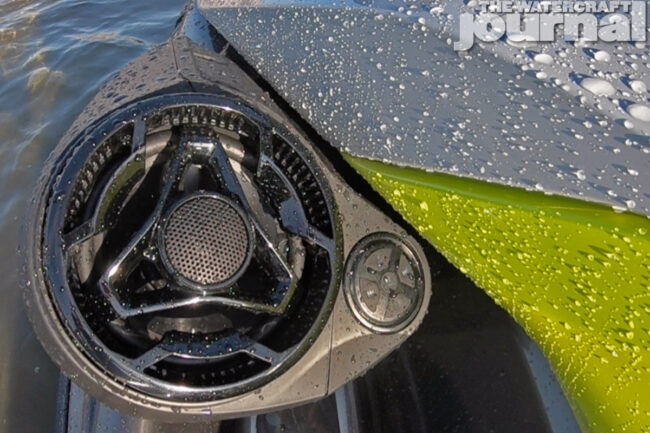
So whether you’re looking to haul extra gas with Sea-Doo’s 4-gallon fuel caddy, pack a cooler with drinks and snack, or just tote some extra gear to the sand bar, the GTR 230 can do it with ease. This also means that like the larger ST3-based supercharged watercraft, you can remove the backseat for true one-up riding – or use the large rear deck for sunbathing or relaxing, if that’s your sorta thing. And now with two more LinQ options – including a soft-sided dry bag and a new hardcase, as well as the Fish Pro cooler – the GTR, as well as all GTIs, can haul it all.
But for us, the GTR 230 was meant to do one thing: boil water! The new supercharged-and-intercooled 1,630cc ACE motor produces a true 230-horsepower and does do so while running on 87 octane thanks to its lower compression, cast pistons (versus the forged slugs used in the 300-horsepower models).
The larger displacement 1630 ACE – over the outgoing 1500 ACE – gives the 2020 GTR 230 superior initial acceleration, ratcheting up the torque curve to meet right when the boost kicks in – at around 42-miles-per-hour. With half of its 15.9-gallon fuel cell full, we clicked off a peek top speed of 63.1 at 7,700rpm but weren’t able to replicate it again.
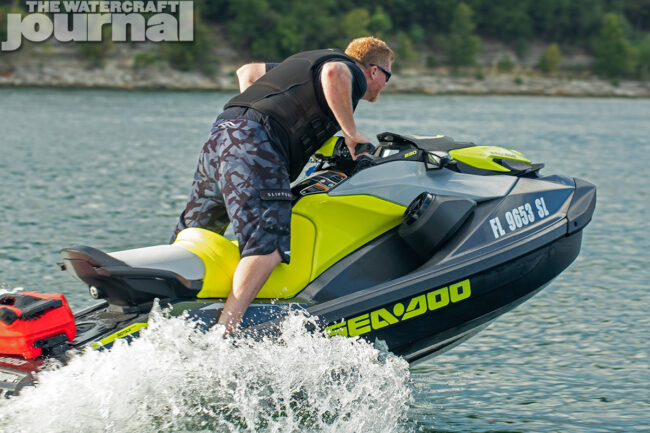
If that sounds slower than normal, you’d be right. During The Watercraft Journal’s test session, Sea-Doo’s R&D Project Manager, Kim Ross informed us that these machines were pre-production units and were detuned by 300-rpm across the engine map. When finally ready for the public, we would see a maximum of 8,000rpm and consequently another 2-to-3 miles per hour on average. So don’t panic, you guys.
For us, what made the GTR 230 “the total package” was the integration of Ergolock into the driver’s seat. The narrowed saddle and deep footwells naturally place you up and over the handlebars, ready to snap off a full speed turn. While retaining some playfulness, the new GTR hull is nowhere near as loose as the outgoing shape.
We were wowed with how naturally this Sea-Doo tracked in rough, wind-blown afternoon lake chop. Never once did we feel the nose start to hunt or wander; the machine went wherever we pointed it. This natural tracking characteristic was easily one of its best attributes, together with sharp lifting strakes that run the length of the hull, helping bring the GTR rapidly up to plane.

Interestingly, the bow of the GTR’s hull is convex, curving outward, instead of concave like that of the ST3. This lets the GTR roll gradually into large, sweeping turns as well as navigate through rougher water far more predictably than the larger runabouts. In fact, all of us who piloted the watercraft over the two days of testing parroted the same feeling – and voiced our unilateral preference toward this hull shape over the larger platform.
Of course, the biggest surprise was how well the revised Polytec hull behaved. Given the larger size and 230-horsepower from the 1630 ACE engine, we expected to find the hull wrought with all sorts of unusual behaviors – yet, this was absolutely not the case. Any flex in the Polytec hull was almost entirely undetectable. No unusual sounds, reverberations or rattling was heard either.
As BRP Global Product Specialist Manager, James Heintz explained, was due in large part to the second-generation Polytec’s use of fiberglass stringers running the length of the inside of the hull (what Sea-Doo likes to call a fiberglass “inner skin”), as well as Sea-Doo’s doubling of the Polytec’s overall thickness – from a quarter inch to half an inch thick throughout the entire ski.

This reinforcing effort gave the GTR the much-needed robustness to handle the big increase in power and resistance against torsional forces required while throwing such a machine into the kind of turns we were executing these two days. If the use of Polytec was hindering the GTR’s ability to perform, we simply didn’t see any signs of it.
With an MSRP of $12,399, the 2020 GTR 230 remains one of Sea-Doo’s most competitively priced race-ready machines – it is the lowest entry in their performance segment, after all. Yet, unlike other segment-dedicated runabouts, the GTR 230 is the hot rod that the whole family can enjoy – whether its zipping around the lake, lounging in a cove or traversing down the shoreline for the day – and that’s saying a lot.









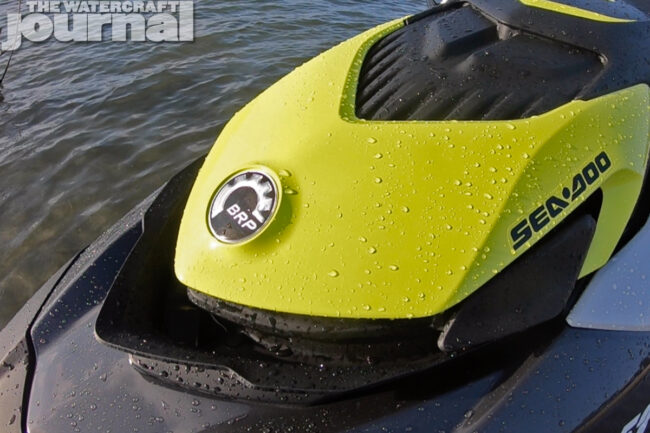

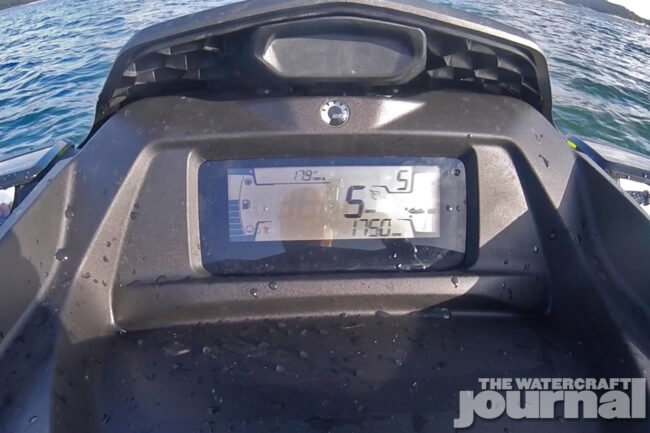

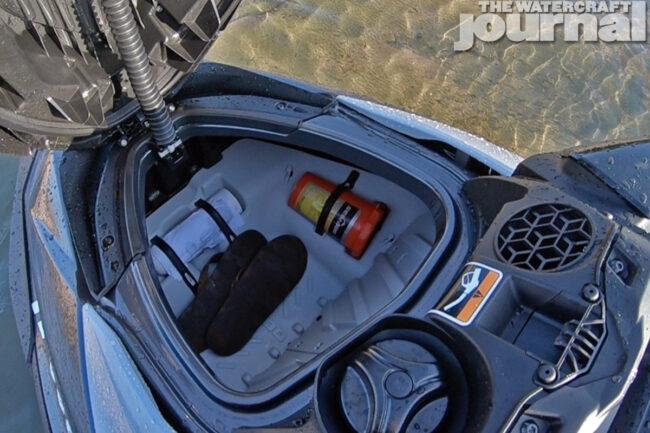
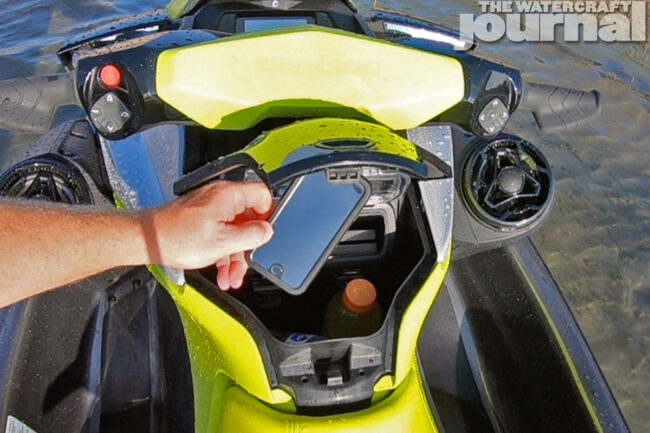
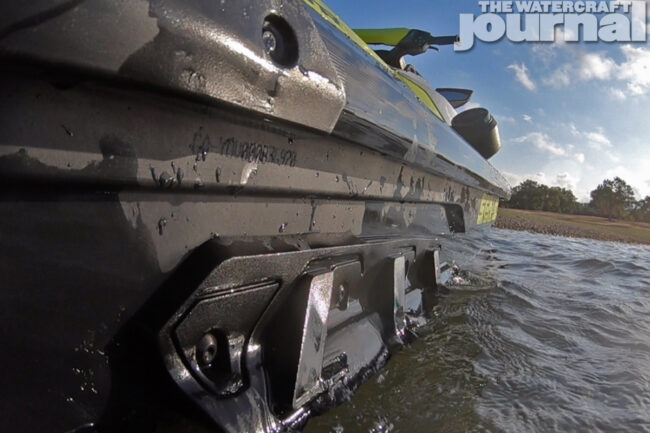

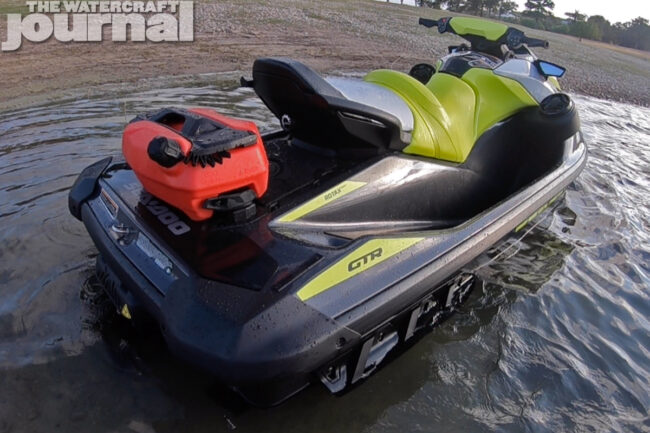
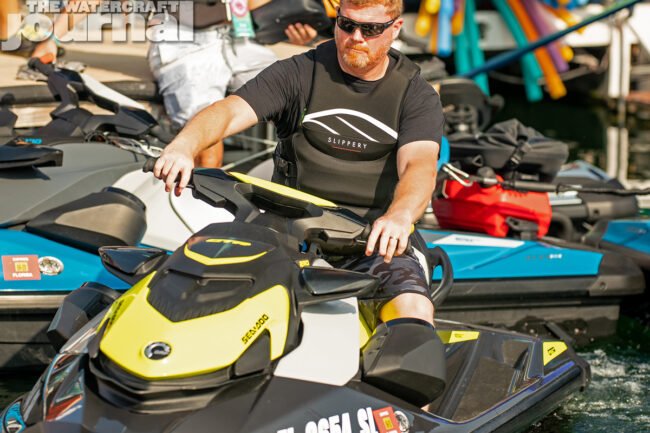
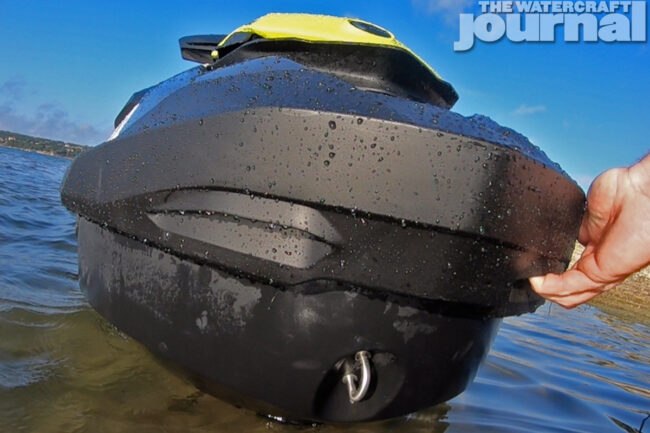



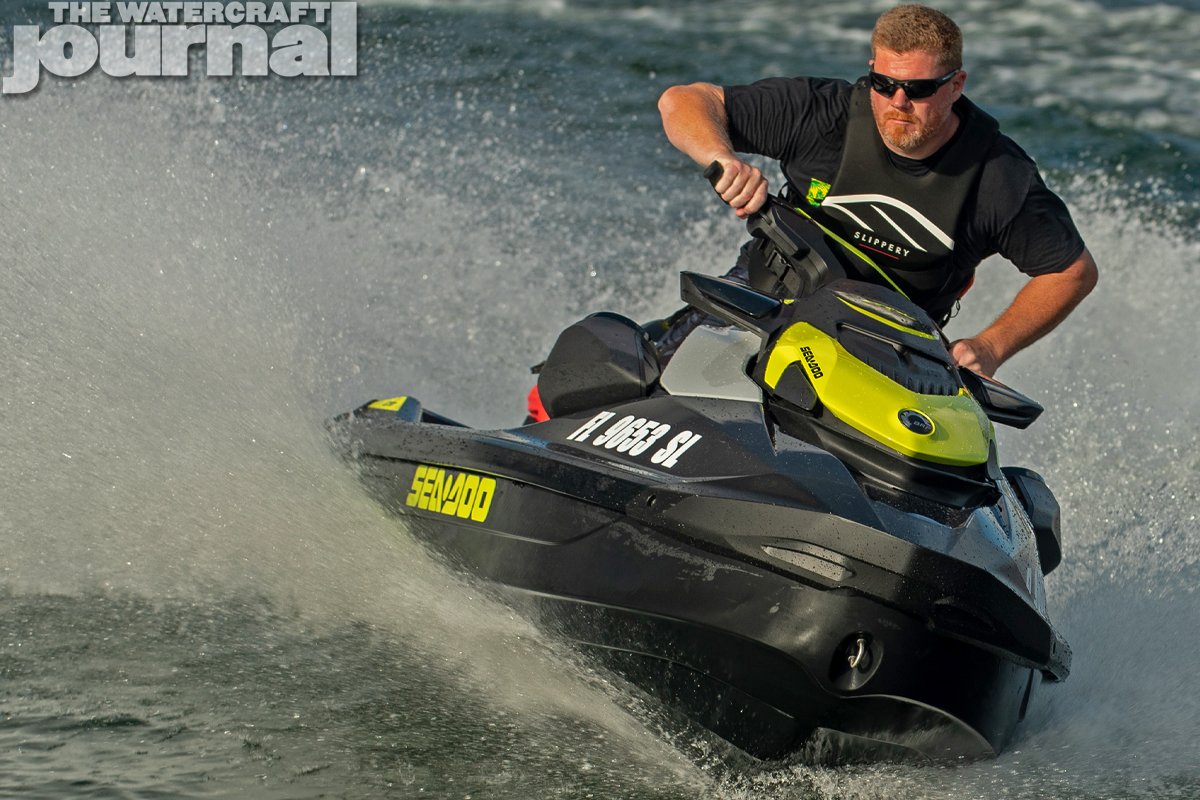





















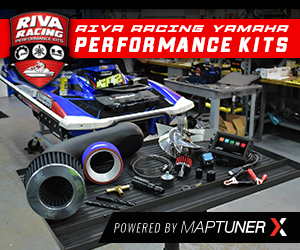





[…] Read full review […]